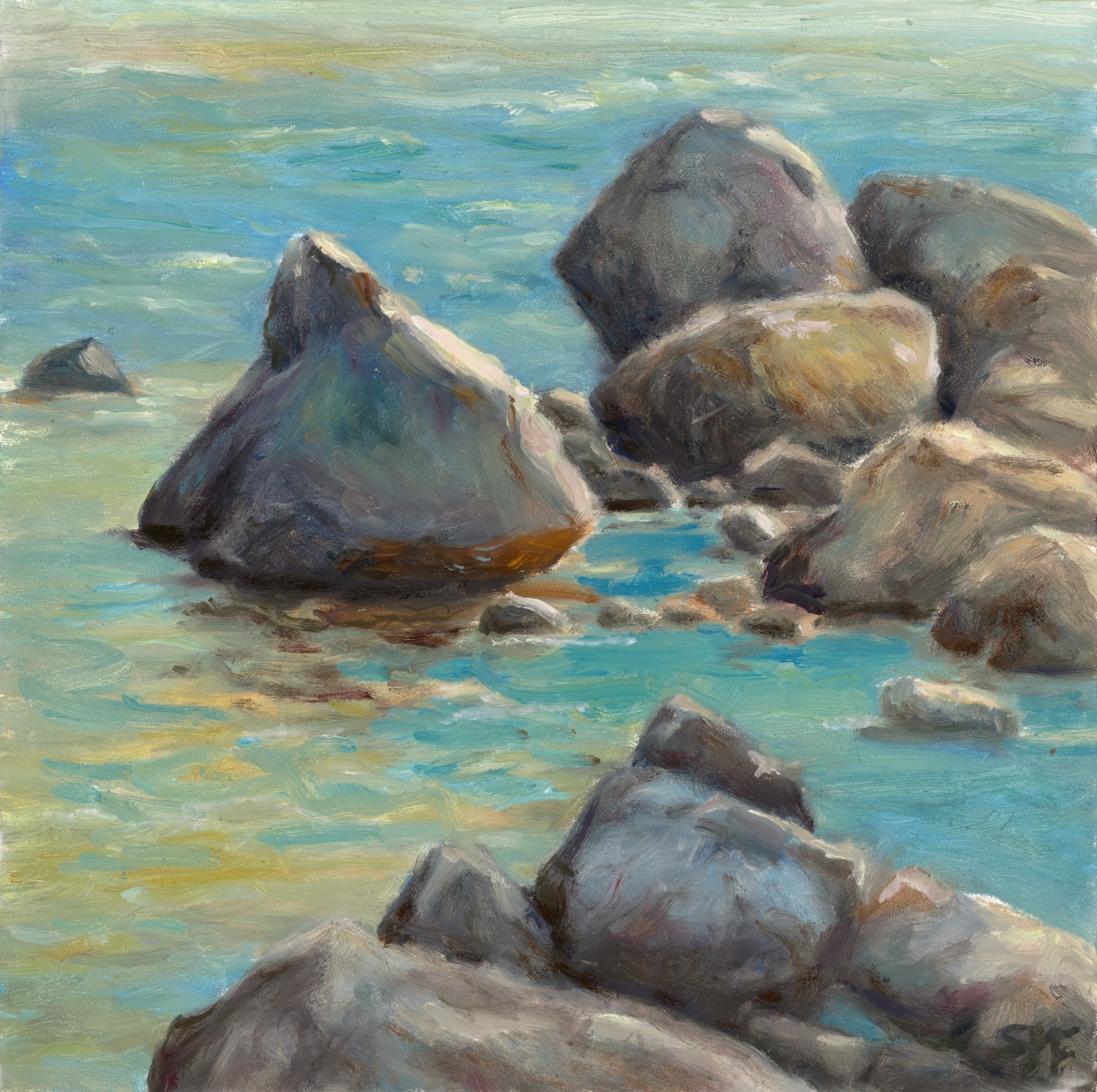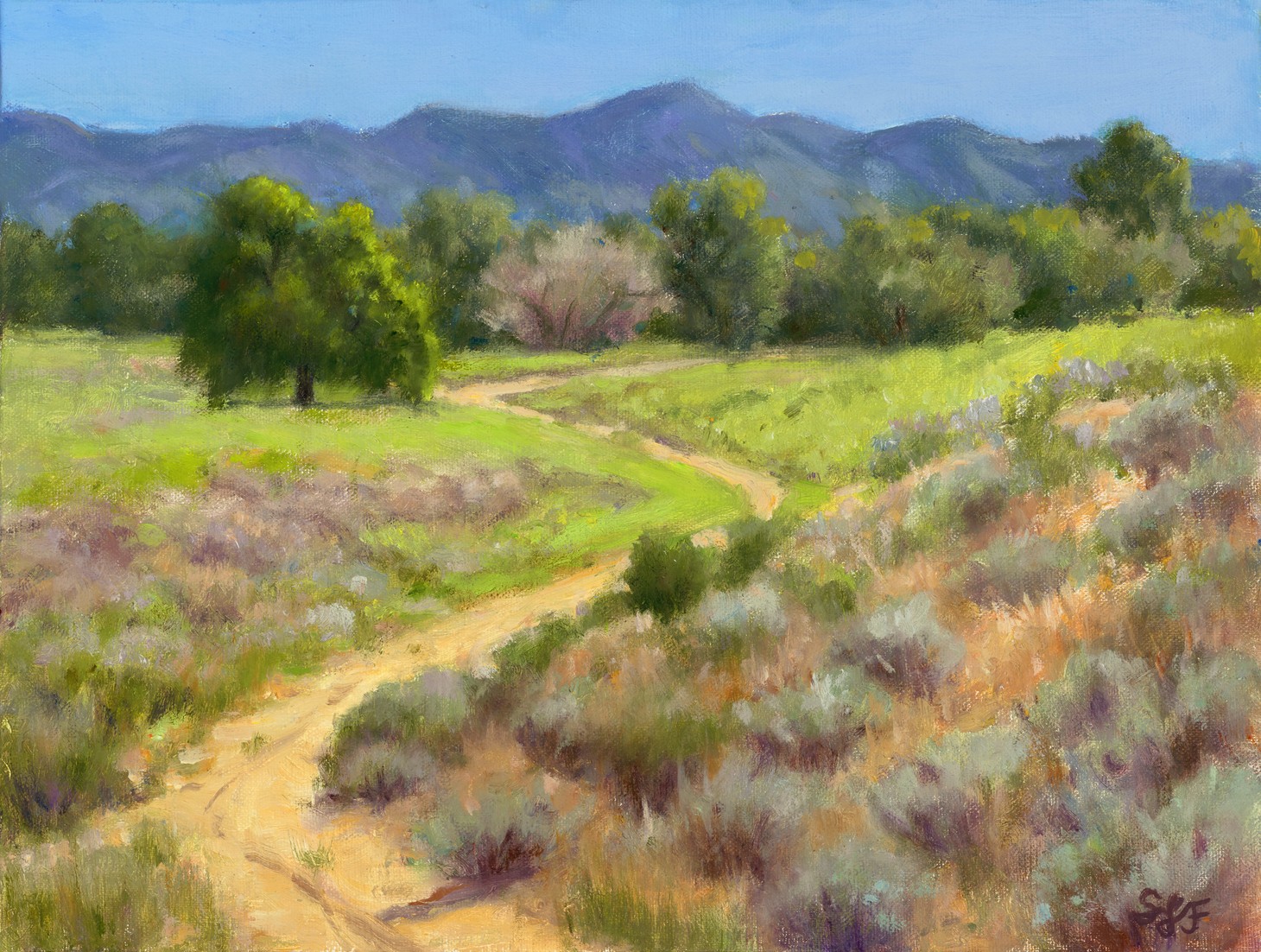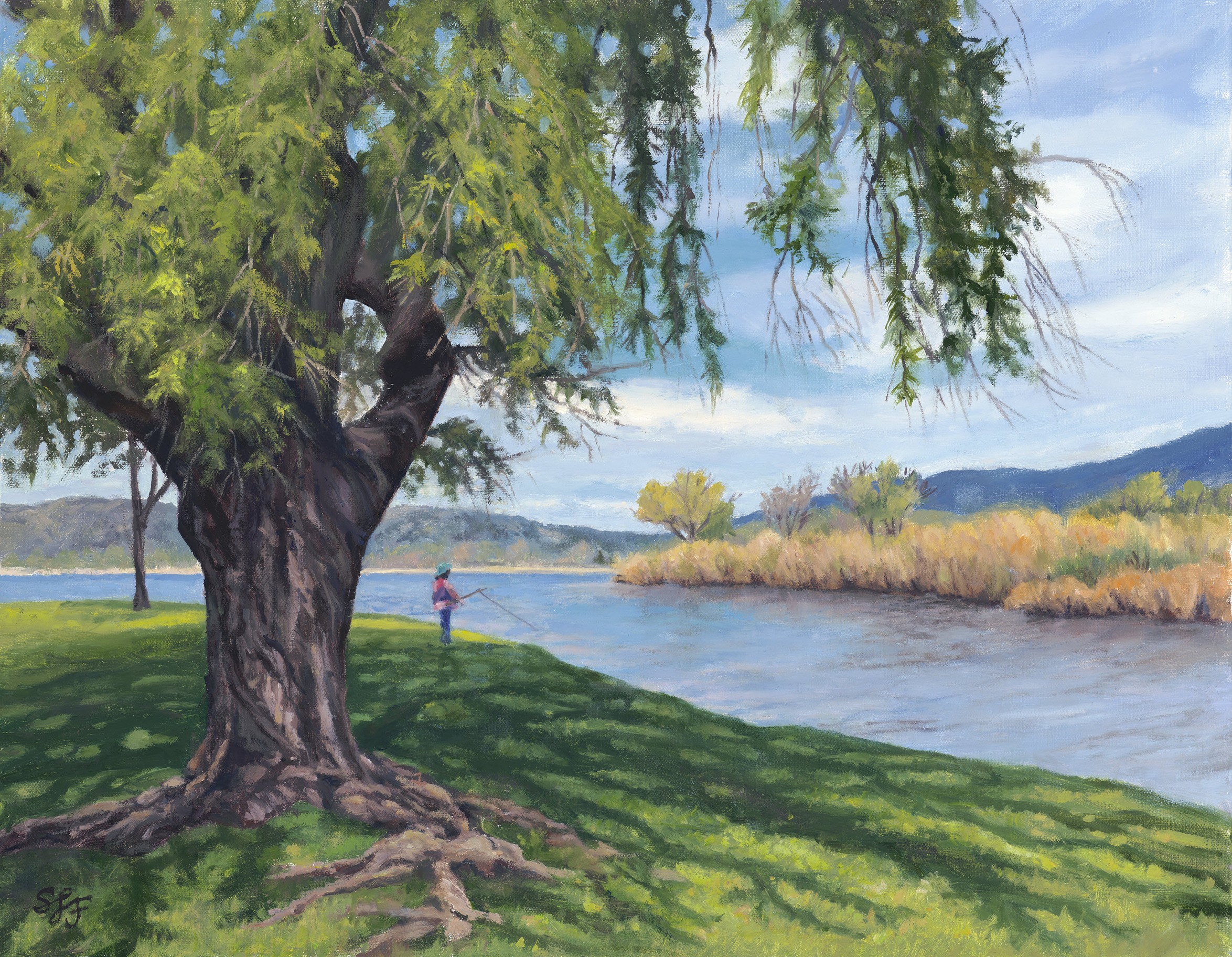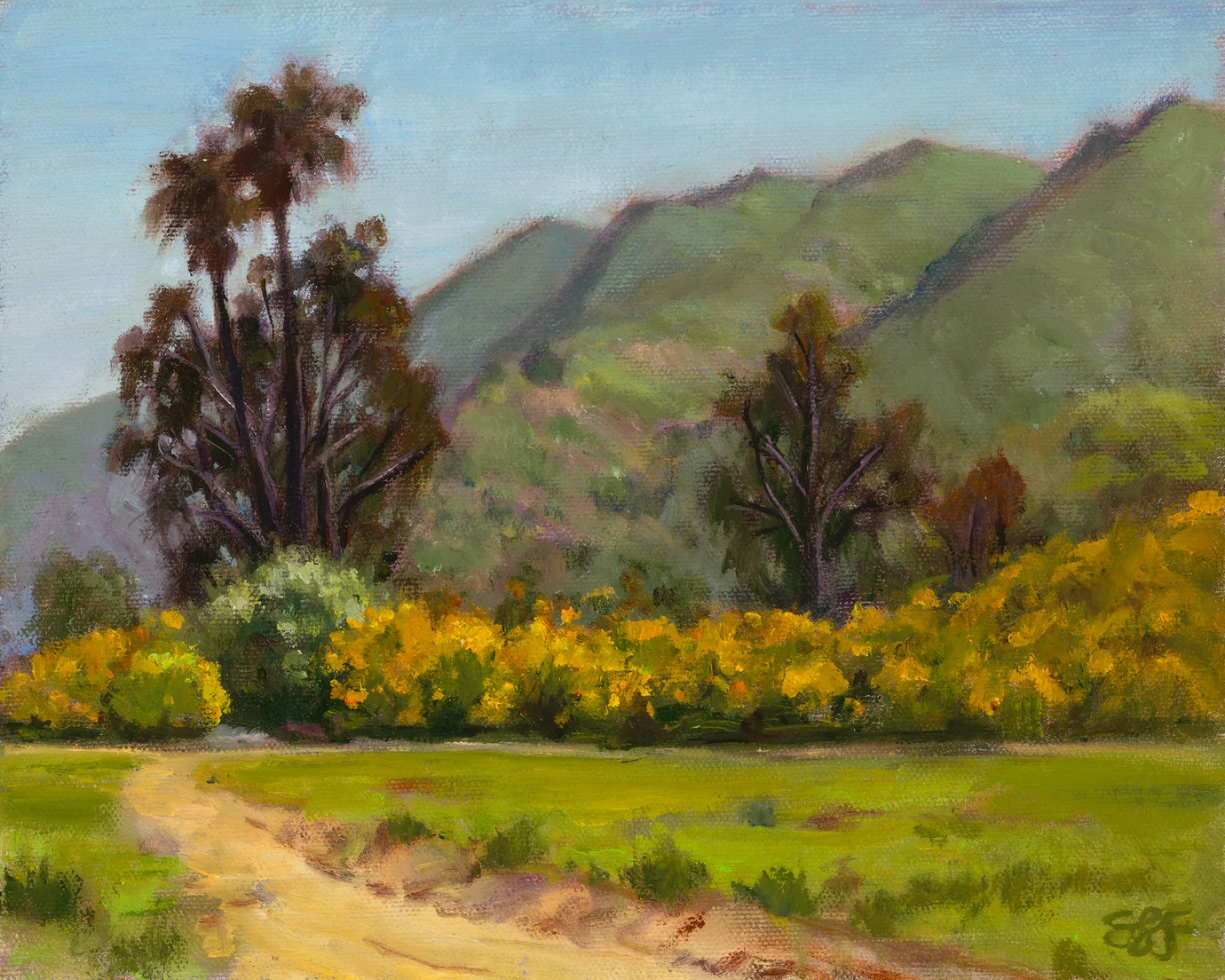

Today we’d like to introduce you to Sandy Fisher.
Hi Sandy, it’s an honor to have you on the platform. Thanks for taking the time to share your story with us – to start maybe you can share some of your backstory with our readers?
I believe the drive to create is something you carry with you—one of those quiet urges that shows up early and stays with you. Growing up, art was always around me. My father, Richard Earnest, taught at LA Trade Tech and came home with show‑cards and images that hooked my curiosity. Family outings to museums and our travels further deepened my fascination with how an artist could capture three‑dimensional scenes and emotion on a flat surface.
As a kid I was always drawn toward making things: wood burning, paint‑by‑numbers, jewelry making, macramé, sewing or stained glass—if it was hands‑on, I wanted to try it. But it wasn’t until I was married, raising young children and with a successful career in banking that I finally gave oil painting a try. I enrolled in a class at a nearby art school, nervous to even pick up a brush because I held such reverence for art. To my surprise my third piece received an Award of Merit at a local show. That recognition gave me the confidence I needed to keep going.
Over the past 15 years I’ve immersed myself in learning and practice: taking lessons and plein‑air workshops with artists I admire such as Rich Gallego, Frank Serrano, Paul Kratter, Kathleen Dunphy and Matt Smith. A turning point for me came when a dear friend and wildlife artist passed away before fully realizing her potential. Her loss was a reminder: life is short, and our creative voices deserve to be heard. I promised myself then I would make time for painting and pursue it with all my heart.
Today, I’m so grateful to be able to share the beauty of nature through my work—from association galleries to outdoor art shows across Southern California. Each painting is an invitation into a quieter world; one where sunlight, trees, water and rocks become conversation partners rather than subjects.
Alright, so let’s dig a little deeper into the story – has it been an easy path overall and if not, what were the challenges you’ve had to overcome?
The road has been far from smooth—but the bumps have shaped me just as much as the flat stretches. My challenges fall into three broad categories: physical, domestic/personal, and self‑imposed.
Shortly after I began painting, I was diagnosed with metastatic cancer in my lower spine. The radiation and chemo saved my life—but left me with nerve damage, neuropathy and chronic intestinal issues. Walking isn’t what it used to be, and there are days when my body says “you’re staying home.” Still, I push myself outdoors when I can—to feel the sun, hear the birds, smell the earth—and I paint. Because in those moments, even with limitations, I am fully alive.
On the home front—as a wife and mother—there were years where I carried the expectation of the “super mom” myth: hot meals, spotless house, being everything for everyone. I finally had to have a heart‑to‑heart with myself and my husband. He said, “As much as I love your cooking, if you want to have soup and a sandwich for dinner, that’s fine by me.” That simple sentence changed everything. It freed me to prioritize what really matters: the art I love, the work I want to do, the voice I want to share.
I once gave a talk titled “Answering the Call to Create”, where I addressed these internal pressures and the ways we sideline our passions for comfort or expectation. Realizing that no one will remember the shining kitchen as much as the shining piece of art was a kind of liberation.
And the rewards? They are rich. The joy of painting, the friendships I’ve made in the art community, the places I’ve stood with canvas in hand—these are the treasures. It’s not always easy, but it is always worth it.
Appreciate you sharing that. What else should we know about what you do?
I am representational California and western landscape and botanical oil painter who finds endless inspiration in the natural world. Whether I am painting in the field or working in my studio, every piece begins with a trip outdoors. My smaller plein air works measuring 11” X 14” or less are often 85% completed on location, then refined at home to achieve the level of detail and harmony I envision. Larger paintings often evolve from a plein air study or photo reference, allowing me to explore the scene more deeply and bring out its character in a bigger format.
In recent years, I’ve become especially drawn to botanical subjects particularly cacti and succulents often from my own garden. There’s something about their sculptural forms, resilence and subtle beauty that resonates with me. Many of these pieces are painted in a cropped-in perspective that celebrates their texture and color close up. They’ve been warmly received in Art Tehachapi, Western Art Collector advertisements, and in the San Marino League’s show at the Huntington Library & Gardens – definite highlights of my artistic journey so far.
The goal of my artwork is simple but deeply felt: to share the magic and wonder of the natural world we are so fortunate to inhabit. I aim to draw the viewer into that same sense of joy and serenity I experience outdoors – to notice the quiet details and beauty that often goes unseen. Collectors often tell me they’re drawn to the harmony and subtle color shifts in my paintings, the attention to fine detail, and the delicate, sensuous quality of my brushwork.
Ultimately, what sets my work apart is that it comes from a place of genuine love and observation – a desire not just to paint what I see, but to express what I feel when surrounded by the beauty of nature.
What sort of changes are you expecting over the next 5-10 years?
I think the art world will continue to evolve in some fascinating ways over the next decade. With more people working from home, there’s a growing desire to surround themselves with meaningful, uplifting pieces – something beautiful and personal to look at throughout the day. That shift has already encouraged many to invest in original art, which is wonderful to see.
Every so often, there’s talk about the “demise” of traditional representational art, yet it continues not only to survive but to flourish. Those who value craftsmanship and mastery will always be drawn to artists who dedicate themselves to developing their skills and expressing something genuine. There’s a timeless appeal in that kind of authenticity that no trend can replace.
Of course, technology – especially AI – is also changing the creative landscape. It brings both exciting and unsettling possibilities. I do see potential for AI to serve as a helpful tool for learning, idea generation or even offering critical feedback. But at the same time, I don’t believe it can ever replicate the emotion, energy, and soul contained in a physical painting. There’s something irreplaceable about standing in front of a work of art and seeing the brushwork, layers of nuanced color, and ability to move the viewer’s eye throughout the canvas – the tangible evidence of an artist’s hand and heart. That’s the human connection that keeps art alive and I believe it always will.
Contact Info:
- Website: https://SandyFisherFineArt.com
- Instagram: https://instagram.com/Sandyfisherfineart/
- Facebook: https://www.facebook.com/sandy.fisher.900






















